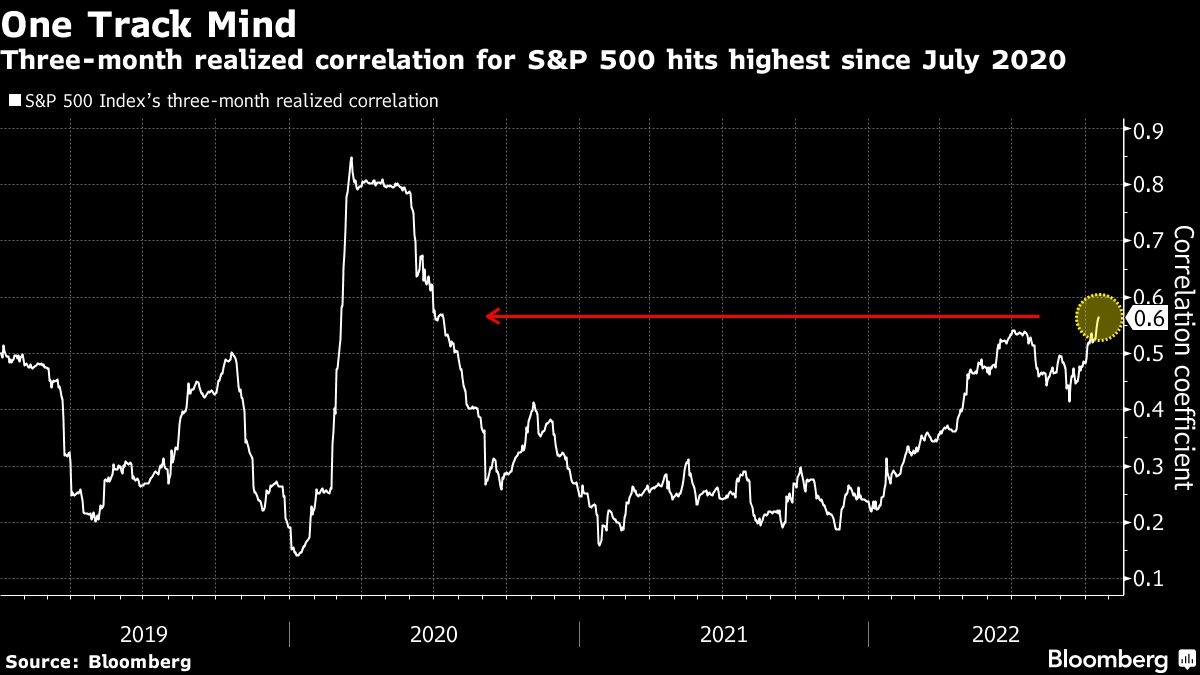Oct 19, 2022
It's a stock picker's nightmare with everything moving in tandem
, Bloomberg News
There will come a time to buy growth stocks, stay defensive for now: Chad Morganlander
A nightmare scenario for stock pickers is unfolding just as the third-quarter earnings season gets underway.
The S&P 500 Index's three-month realized correlation -- a gauge of how closely the top weighted stocks in the benchmark move relative to each other -- is at its highest level since July 2020. As a result, traders and active fund managers are increasingly dependent on where the biggest names in the broad equities benchmark are headed.
“This definitely makes things harder for active management though because everything is moving in tandem,” said Todd Sohn, managing director of technical strategy at Strategas Securities. “If the broader U.S. equity market continues to rally while stock correlations are rising, it would signal there’s still underlying stress and skepticism among investors.”

As correlations rise, it becomes increasingly difficult for fund managers to outperform the broader market. Throughout 2021, the correlation coefficient was 0.31 or less, but investors' fears of a looming U.S. recession have propelled it to almost twice that level this year. The last time shares traded in tandem like this was during the early days of the coronavirus pandemic, when stocks crashed before the “everything rally” took over.
For investors, the increased correlations make the upcoming quarterly results from Apple Inc., Microsoft Corp., Alphabet Inc., Amazon.com Inc. and Tesla Inc. even more crucial. The five tech giants, which combined account for about 22 per cent of the S&P 500’s total weight, report their results over the next week.
Tesla is the first to go, with its quarterly report due after the close of trading on Wednesday. Last quarter, the electric-vehicle maker beat analyst expectations and jumped by nearly 10 per cent on the day after the report, while the S&P 500 closed up one per cent.






